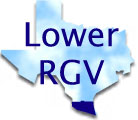

|

|

|

|

|

|

|

|

|

|
City of Harlingen TMC Equipment Packages |
 |
The following equipment packages are associated with the "City of Harlingen TMC" element. Select the "Details" icon to see the detailed process specifications that support each equipment package, or consult the National ITS Architecture web site for more information.
This Equipment package collects, stores, and provides electronic access to the traffic surveillance data.
This equipment package monitors highway-rail intersection (HRI) equipment at the roadside which manages highway traffic. Various levels of roadside equipment may be interfaced to, and supported by, this equipment package to include standard speed active warning systems and high speed systems which provide additional information on approaching trains and detect and report on obstructions in the HRI. This equipment package remotely monitors and reports the status of this roadside equipment. A two way interface supports explicitly status requests or remote control plan updates to be generated by this equipment package. Status may also be received periodically in the absence of a request or asynchronously in the event of a detected failure or other unsafe condition at the intersection.
This equipment package provides strategic coordination between rail operations and traffic management centers. It receives train schedules, maintenance schedules, and any other forecast events which will result in highway-rail intersection (HRI) closures from Rail Operations. The provided information is used to develop forecast HRI closure times and durations which may be applied in advanced traffic control strategies or delivered as enhanced traveler information. This equipment package includes the processing and algorithms necessary to derive HRI closure times and the communications capabilities necessary to communicate with rail operations and interface to the traffic control and information distribution capabilities included in other Traffic Management Subsystem equipment packages.
This Equipment package provides the capability to traffic managers to detect and verify incident. This capability includes analyzing and reducing the collected data from traffic surveillance equipment, including planned incidents and hazardous conditions.
TMC Incident Dispatch Coordination/Communication
![]()
This Equipment package provides the capability for an incident response formulation function minimizing the incident potential, incident impacts, and/or resources required for incident management including proposing and facilitating the dispatch of emergency response and service vehicles as well as coordinating response with all appropriate cooperating agencies.
This Equipment package provides capabilities in addition to those provided by the TMC Basic Signal Control Equipment package for analyzing, controlling, and optimizing area-wide traffic flow. These capabilities provide for wide area optimization integrating control of a network signal system with control of freeway, considering current demand as well as expected demand with a goal of providing the capability for real-time traffic adaptive control while balancing inter-jurisdictional control issues to achieve regional solutions. These capabilities are best provided using a Traffic Management Center (TMC) to monitor and manage freeway ramp meters and intersection traffic signals and software to process traffic information and implement traffic management measures (e.g., ramp metering, signalization, and traffic coordination between both local and regional jurisdiction). The TMC shall be able to communicate with other TMCs in order to receive and transmit traffic information on other jurisdictions within the region.
This Equipment package provides the capability for traffic managers to monitor and manage the traffic flow at signalized intersections. This capability includes analyzing and reducing the collected data from traffic surveillance equipment and developing and implementing control plans for signalized intersections. Control plans may be developed and implemented that coordinate signals at many intersections under the domain of a single traffic management subsystem. In advanced implementations, this package collects route planning information and integrates and uses this information in predicting future traffic conditions and optimizing the traffic control strategy for these conditions. These capabilities are achieved through real-time communication of logged routes from an Information Service Provider. The planned control strategies can be passed back to the Information Service Provider so that the intended strategies can be reflected in future route planning.
TMC Traffic Information Dissemination
![]()
This Equipment package provides the capability to disseminate incident related information to travelers, potential travelers, and private information service providers. These capabilities shall be provided using a workstation type processor within a facility connected to traveler information providers by utilizing existing wireline links.
TMC Work Zone Traffic Management
![]()
This equipment package supports coordination with maintenance systems so that work zones are established that have minimum traffic impact. Traffic control strategies are implemented to further mitigate traffic impacts associated with work zones that are established.
This Equipment package provides monitoring and remote diagnostics of field equipment to detect field equipment failures, issues problem reports, and tracks the repair or replacement of the failed equipment.
 Web Spinner Technology.
Web Spinner Technology.